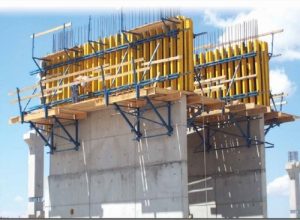In the process of concrete structure construction, building formwork is a very important tool. Generally, in the cast-in-place concrete structure project, the building formwork project will occupy 20% of the cost of concrete structure engineering. It will occupy 30% or 40% of the engineering work and will occupy about 50% of the total construction period. From this point of view, the cost, efficiency and quality of the project construction will be directly affected by the formwork technology. Therefore, it is a very important content for promoting the progress of building technology. In the construction project, it is necessary to pay full attention to the role of formwork technology, a full understanding of the development process of building formwork, then we can predict the future development trend of formworks.

1 Development history of building formwork
As a special part of the concrete construction project, the building formwork has experienced a long period of development at home and abroad. The first concrete formwork was a model that used wood loose boards and assembled into concrete according to shape and structure. After the mold was removed, it became a pair of loose boards, which not only cost a lot of materials, but also the extremely time and labor in assembly and disassembly processing.

By the beginning of the 20th century, there had already been the emergence of prefabricated wood formwork. According to the needs of the project, a set of templates with different sizes could be designed in advance and then handed over to the processing unit for mass production. It is necessary to make the companion design in advance according to the structure form. In this way, it can be assembled according to the layout drawing on the site, and it can be used after the demoulding. This type of formwork has been used in the concrete construction industry for quite some time, and some places know that it is still in use today.
In the second half of the 1950s, large-scale formwork appeared in some countries, such as France. Manually began to replace mechanically, moving, installing and dismantling large formwork. In the process of construction, the flow method was used. Can effectively save labor, improve; labor efficiency, and ultimately shorten the construction period.
In the 1960s, combined stencils began to appear. This type of stencil was mainly modified by the assembly stencil, plus the matching assembly, which can be assembled into different sizes. Large formwork. It is different from the original large-size template fixed in size. Because it adopts the modular design, it can use the combination of the plates to change the size of the large template. It can not only be assembled and used multiple times, but also can be assembled flexibly. And the size of the assembled template can be changed at any time, so it has a wider range of use, this template is the most important form of template used in current cast-in-place concrete engineering.
To be continue…

